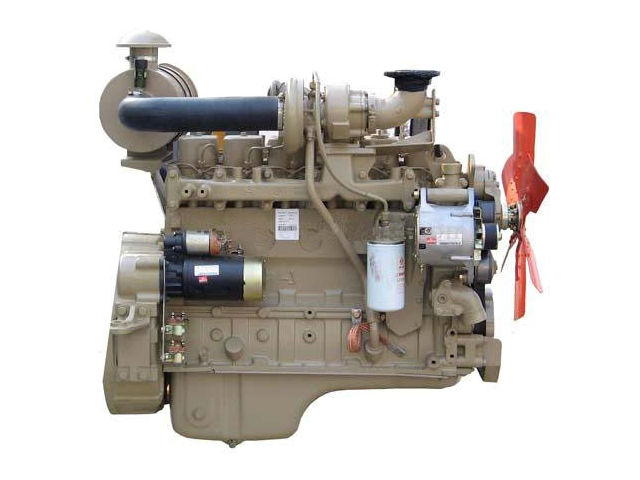When it comes to diesel engines, particularly in the realm of heavy-duty trucks and towing power, the Cummins engine lineup is akin to a venerable classic in a high-octane race. Among the titans of torque and power, the 5.9-liter Cummins and the 6.7-liter Cummins stand as two formidable contenders in this automotive arena, vying for supremacy. But like two powerful gladiators in a coliseum of steel and grit, each brings its own strengths, weaknesses, and a unique allure to the table.
First, let’s delve into the engine configurations, beginning with the 5.9 Cummins. This engine, produced from 1989 through 2007, emerged as a legend. Picture it as a vintage sports car—a delightful blend of nostalgia and performance, respected for its simplicity and sheer durability. With a displacement of 5.9 liters, this inline-six engine boasts a design that is revered for its robust construction and a long lifespan. Often hailed for achieving high mileage, many owners describe their experiences as akin to owning a dependable old friend that just won’t let you down.
Yet, when it comes to power, the 5.9 Cummins can be a little like a gentle giant. Outputting around 235 to 325 horsepower, it excels in low-end torque—a thrilling feeling akin to the rush of wind as a nimble boat slices through water. However, as we transition to the more contemporary 6.7 Cummins, it’s as if we’ve entered a futuristic landscape with sleek designs and cutting-edge technology. This engine, which debuted in 2007, boasts higher horsepower and torque ratings—up to 400 horsepower and an impressive 1,000 lb-ft of torque in some configurations. It’s the embodiment of modern engineering, evoking images of high-fashion efficiency and performance.
To comprehend the unique appeal of each, one must consider performance and application. The 5.9 Cummins perfectly fulfills the role of a workhorse, ideal for those who prioritize reliability and are often engaged in towing smaller loads or using it for agricultural purposes. Indeed, many enthusiasts still prefer this variant for its unyielding character in demanding tasks, describing its performance as a steadfast companion that never shies away from hard work.
By contrast, the 6.7 Cummins flaunts its prowess in a landscape where power meets precision. The capability to handle significant payloads and the increasingly popular fifth-wheel towing applications make the 6.7 the go-to choice for the high-performance enthusiast and commercial driver alike. The advanced turbo design and intercooling system enhances efficiency, thus allowing this engine to burn cleaner while maximizing output—an impressive feat likening to an athlete in peak condition, effortlessly completing a marathon.
As we ponder over the operational aspects, it’s crucial to highlight diesel efficiency and emissions. The 5.9 Cummins, known for its mechanical simplicity, lacks some of the modern enhancements seen in its successor. While this simplicity translates to less maintenance and fewer electronic components that could fail, it also means an absence of advanced emissions mitigation technologies. In contrast, the 6.7 Cummins introduces features such as selective catalytic reduction (SCR) and diesel exhaust fluid (DEF) systems to meet stringent emissions regulations. Thus, it’s akin to a new generation championing sustainability—a nod to environmental consciousness without sacrificing performance.
However, listeners often forget about the distinctive sounds each engine produces. The guttural growl of the 5.9 Cummins is music for many diesel lovers, resonating deeply—the heartbeats of nostalgia. Yet, the 6.7, with its refined roar, signals a new era of power, combining the rawness of diesel with a more sophisticated tune. In this way, they reflect two divergent philosophies: one rooted in tradition, the other pushing toward innovation.
When considering reliability, both engines have a robust track record. Many enthusiasts advocate for the 5.9 Cummins as potentially the most reliable engine the brand has ever produced, with countless tales of engines reaching over 500,000 miles with proper maintenance. It’s often likened to that reliable compass you can always count on, no matter how turbulent the seas of life may get. On the other hand, the 6.7 Cummins, while slightly more complex thanks to its modern features, doesn’t fall far behind with its engineering advancements designed to enhance longevity, making it equally robust in a different way.
So, which engine is better? The truth is, it depends on the user’s intent. For those who cherish the simplicity and historical charm of the past, coupled with unparalleled reliability, the 5.9 Cummins serves as an indomitable ally. Conversely, for individuals craving cutting-edge power and efficiency, the 6.7 Cummins emerges as the logical option for those who seek to embrace the future of diesel technology.
Ultimately, the battle between the 5.9 and 6.7 Cummins engines transcends mere specifications. It’s a philosophical choice, echoing the eternal debate of tradition versus innovation. As you ponder the road ahead, consider what you value most in your journey. Whether you choose the old-world charm of the 5.9 or the high-tech brio of the 6.7, both engines will propel you forward—ready to face the adventures that lie ahead.
